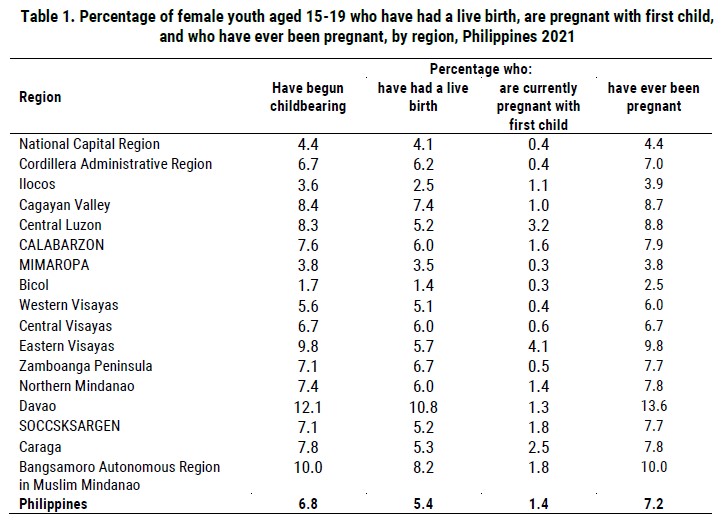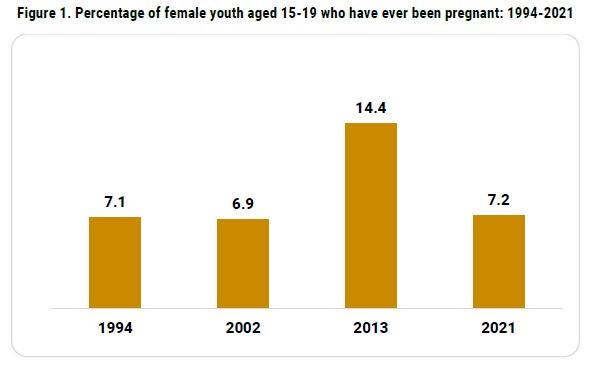

The number of young Filipino females who have began childbearing declined in 2021, according to the recent study by the University of the Philippines Population Institute (UPPI) released on Friday, Oct. 14.
In its 2021 Young Adult Fertility and Sexuality Study (YAFS5), results showed that Filipino young females who started to get pregnant at age 15 to 24 years declined to 386,000, equivalent to 6.8 percent in 2021.
This 2021 study had a 50 percent decrease from the 2013 study where it found that 13.7 percent of young Filipino females aged 15 to 19 years old began pregnancy.
In terms of the percentage of female youth aged 15 to 19 years old who have ever been pregnant, UPPI said 7.2 percent of female youth became pregnant in 2021, a huge decline from the 14.4 percent in 2013.
According to UPPI, this translates to 406,000 ever-pregnant girls at that time. Of which, 306,000 have already given birth, and 79,000 are currently pregnant with their first child.
While some 20,000 were first-time pregnancies, resulting either non-live birth or abortion.
Photo courtesy: University of the Philippines Population Institute (UPPI)
However, despite the large decline in childbearing and teenage pregnancy in 2021, UPPI found that more than half of the regions had a higher rate than the 6.9 percent national rate in 2021.
Among the regions included are Cagayan Valley, Central Luzon, Cavite, Laguna, Quezon, and Rizal and Lucena (Calabarzon), Eastern Visayas, Zamboanga Peninsula, Northern Mindanao, Cotabato, Sarangani, South Cotabato, and Sultan Kudarat (Soccsksargen), and Caraga.
The Davao Region and Bangsamoro Region had a highest pregnancy rate of at least 10 percent, while Eastern Visayas also had highest percentage of female youth pregnant at the time of survey, UPPI said.

Photo courtesy: University of the Philippines Population Institute (UPPI)
“Reducing teenage pregnancy is among the goals of the Adolescent Health and Development Program of the Department of Health, which funds the YAFS5, given the widely documented effects of early childbearing on young women’s sexual and reproductive health (SRH), their education and employment, the health of their children, and its impact on the economy,“ UPPI said.
“This objective also aligns with the United Nations’ Sustainable Development Goal 3 (SDG-3) target of ensuring universal access to SRH services and integration of reproductive health into national strategies and programs,“ it added.





